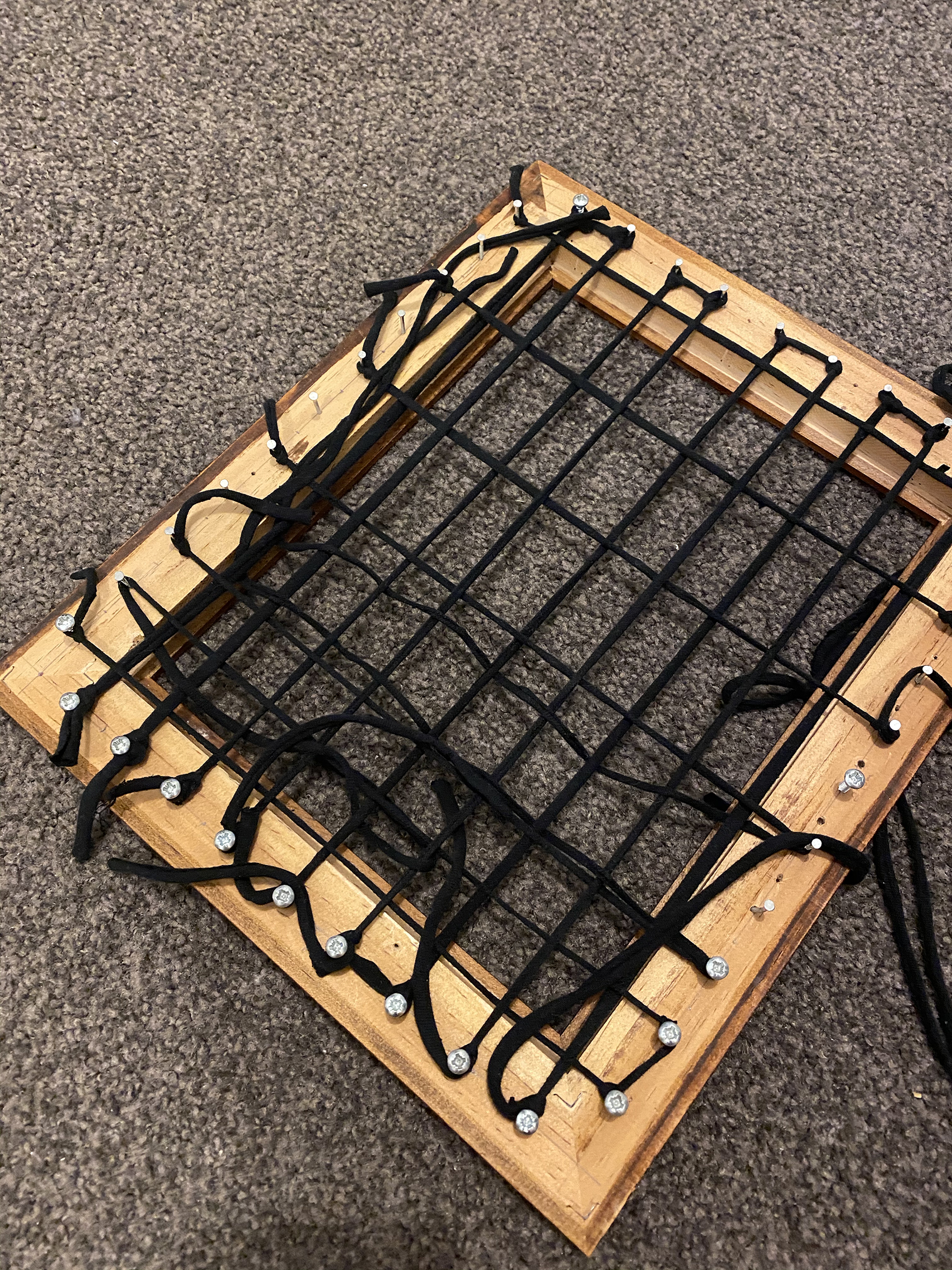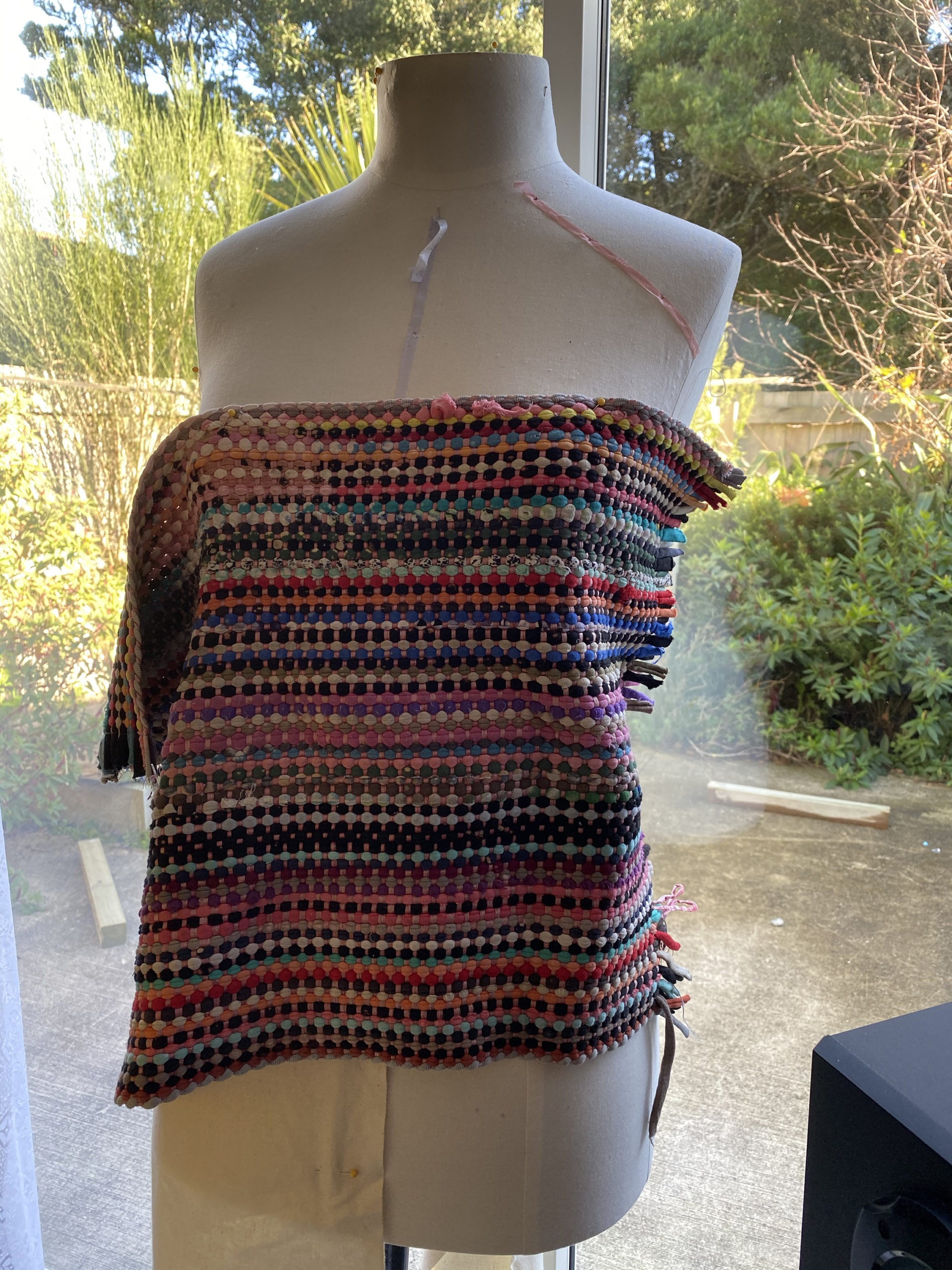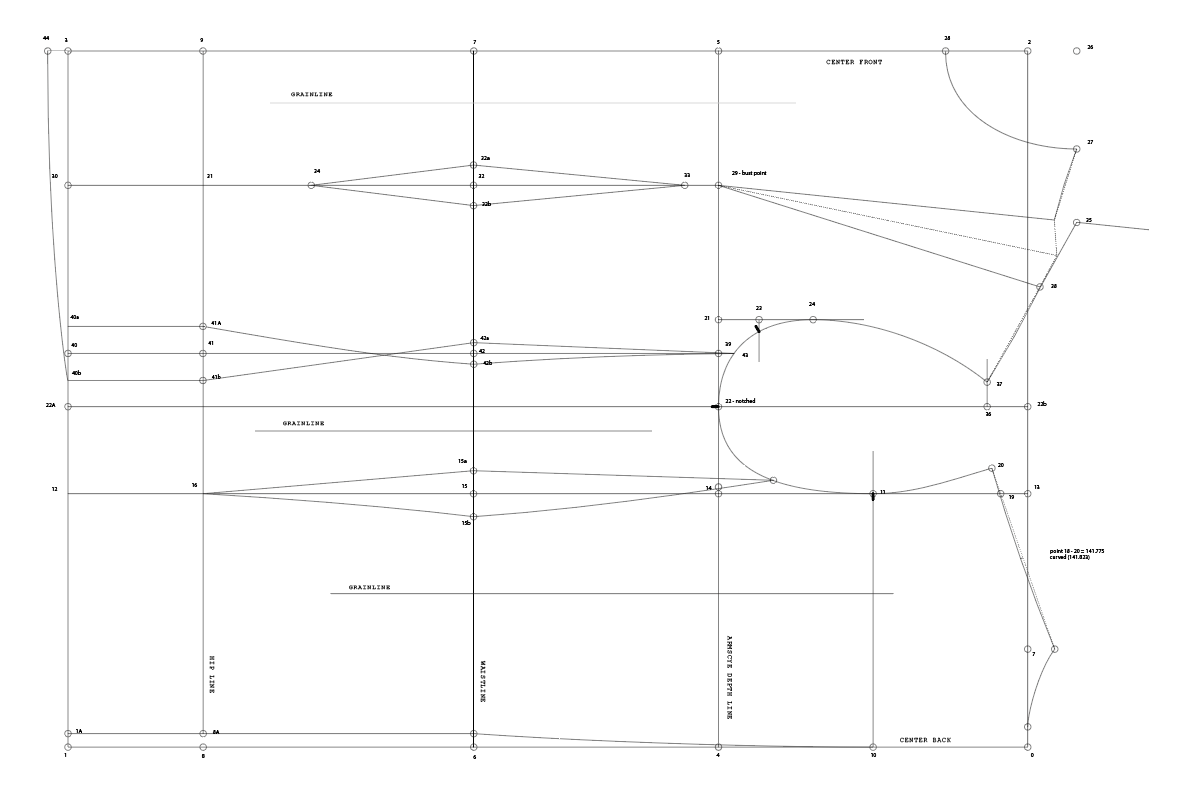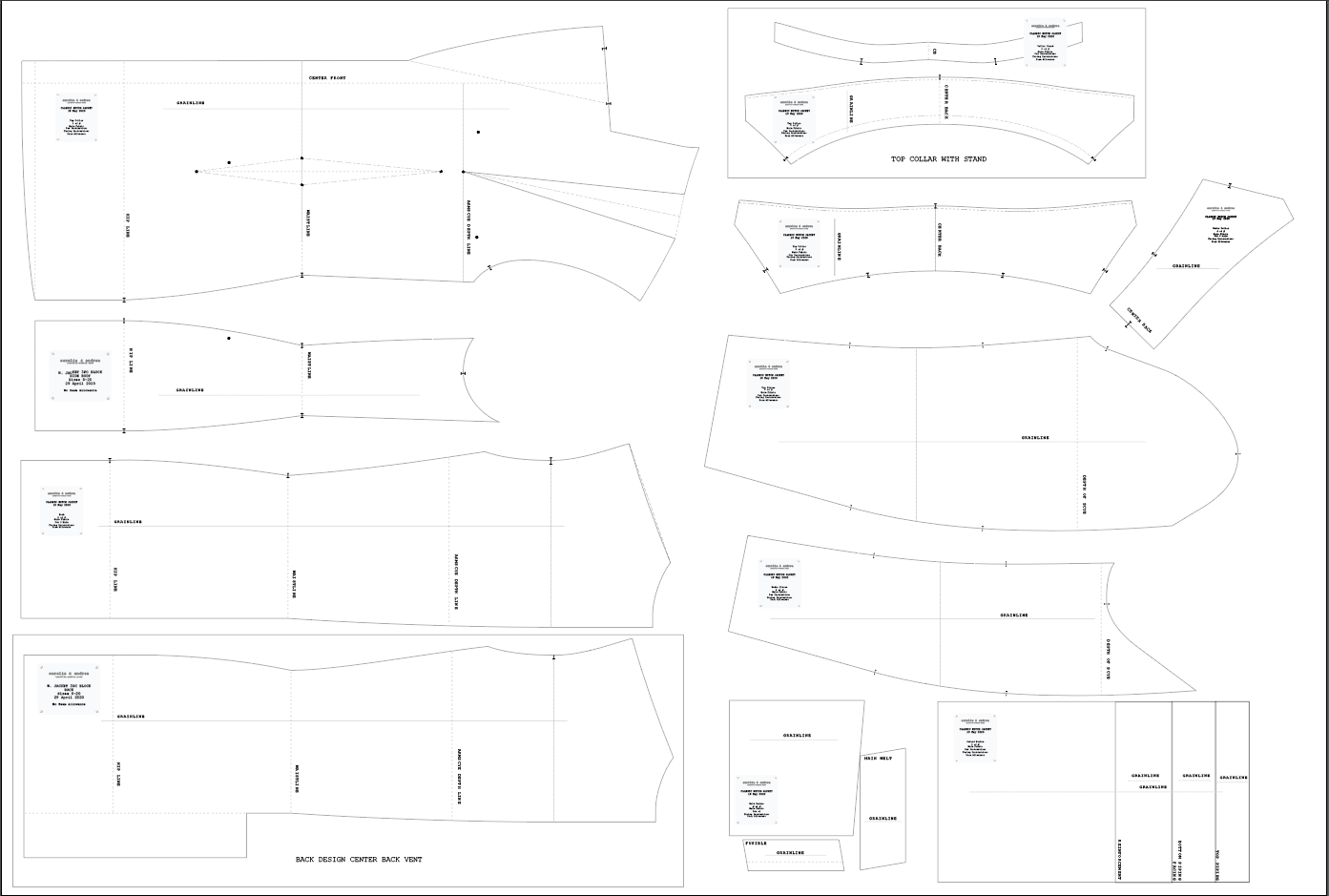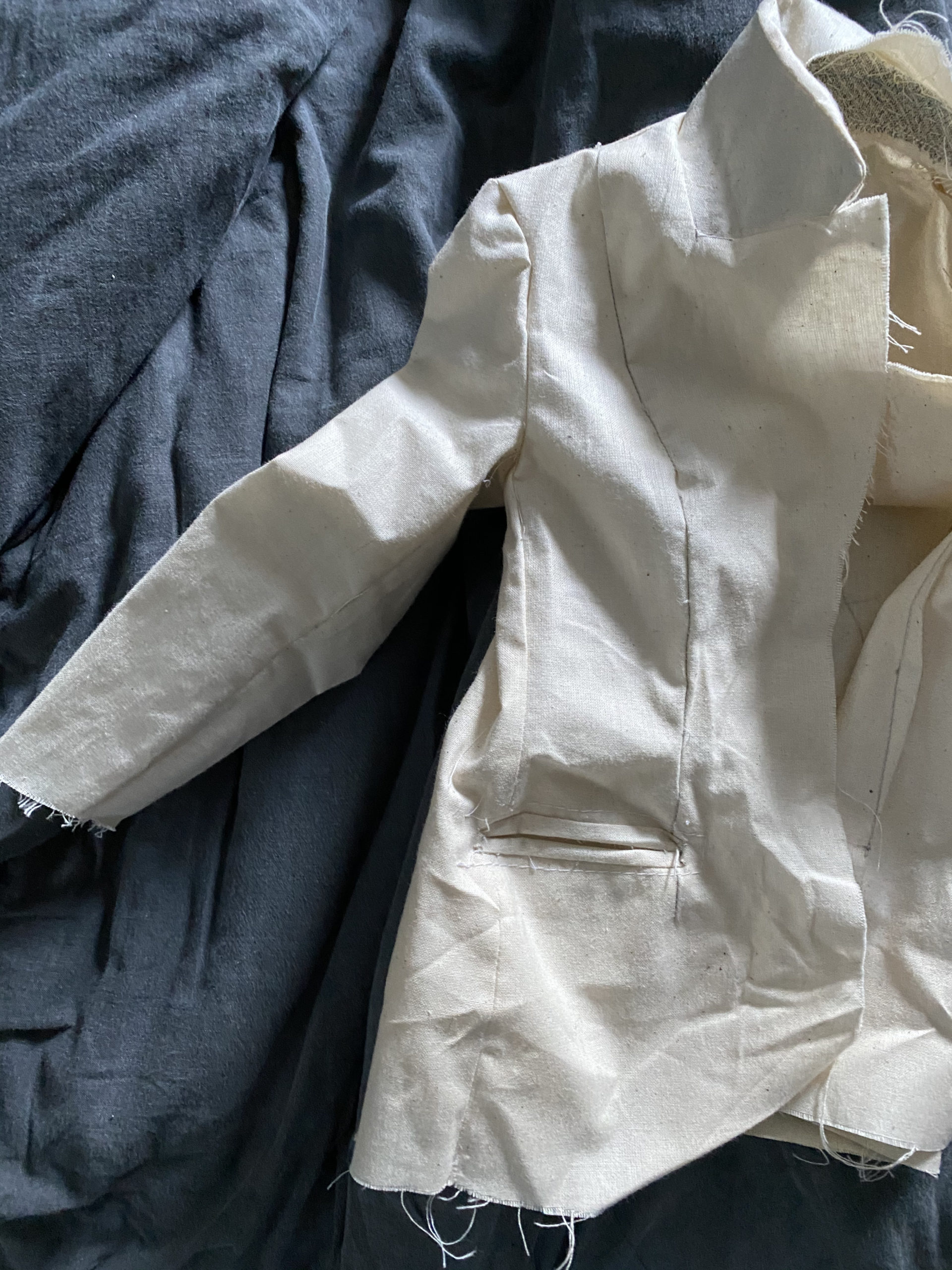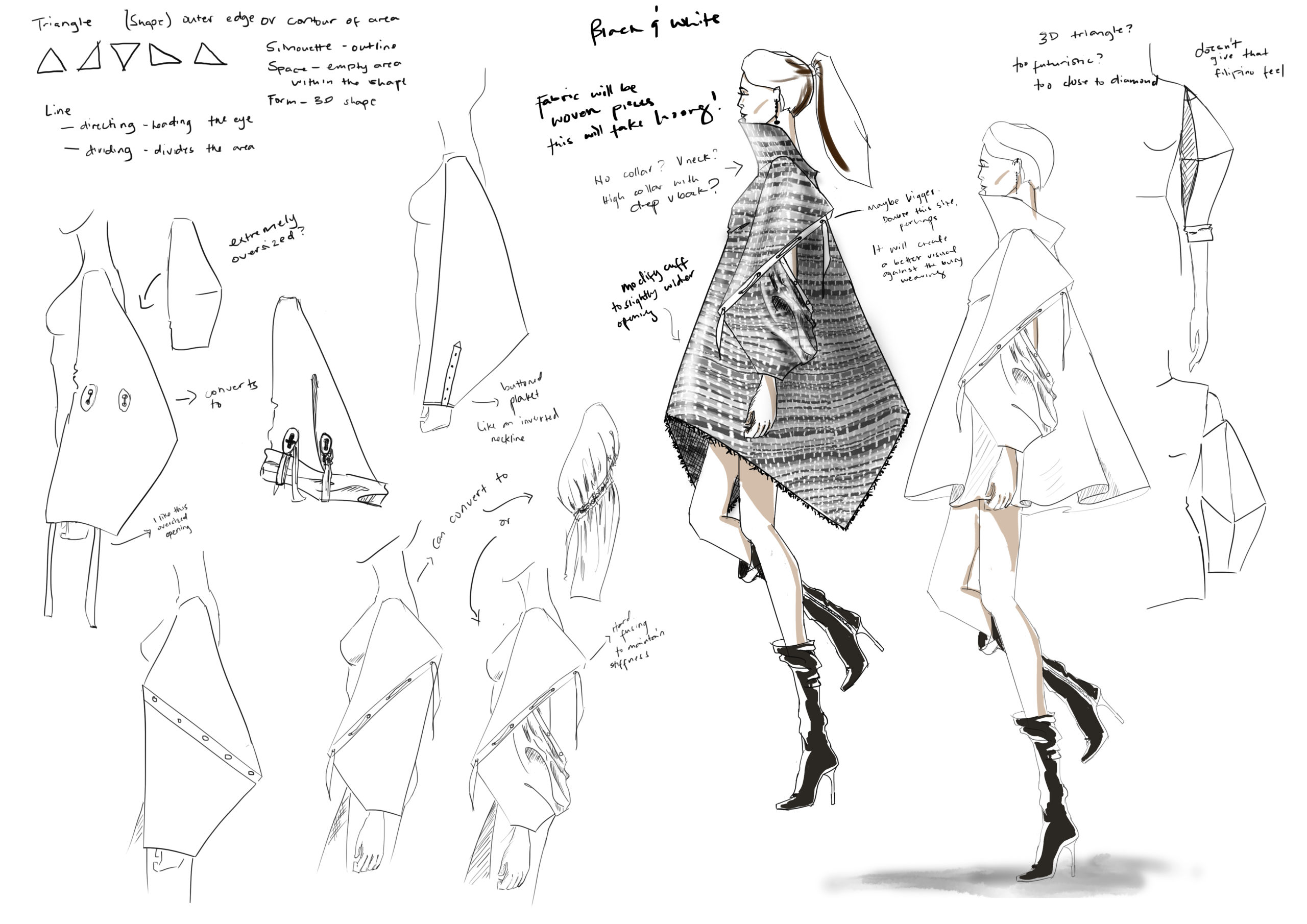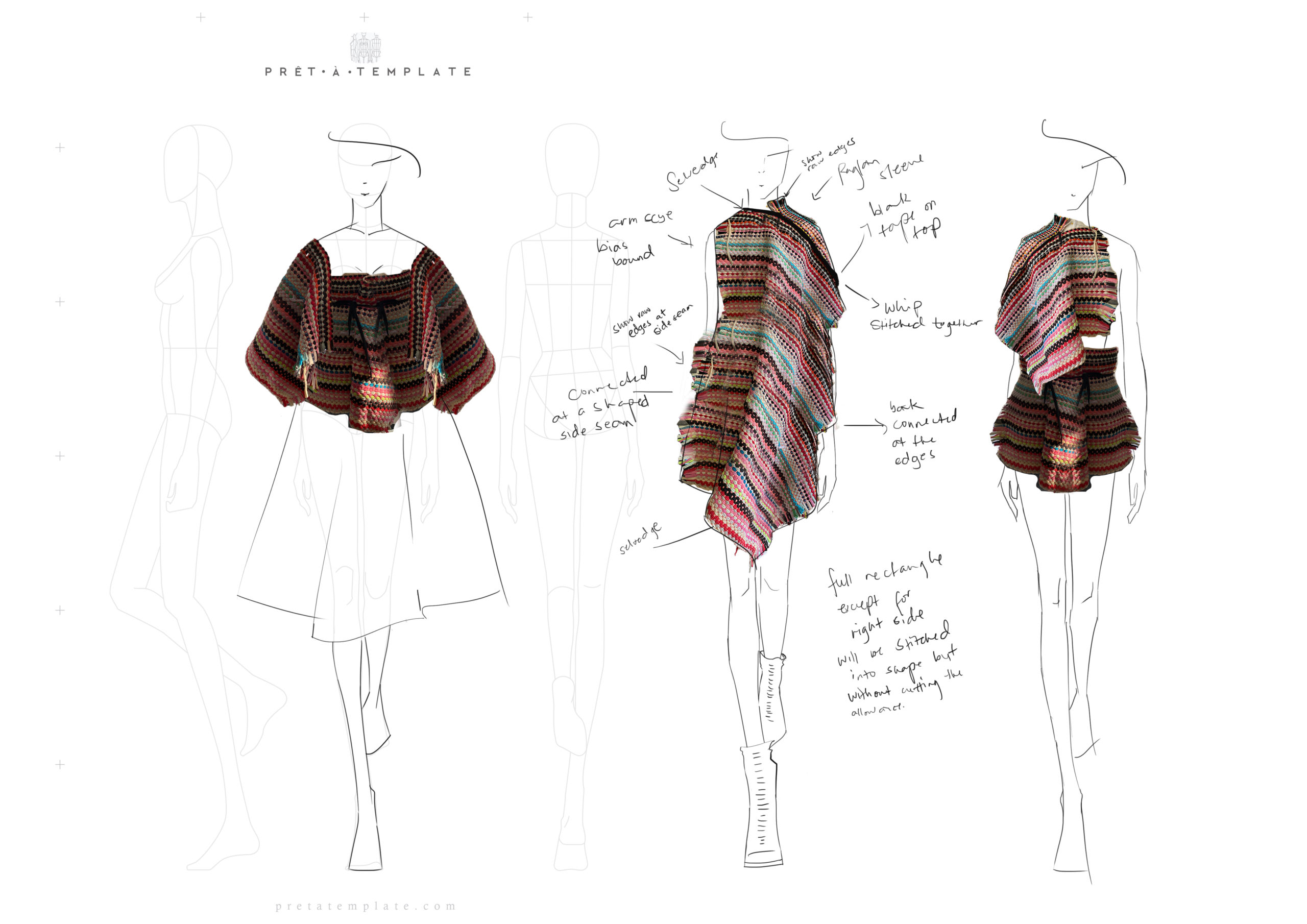One of the end results of this project is a fashion film, regardless if I show at a catwalk or an exhibit. This is in collaboration with my film artist friend, Regine Panlilio. Most of my latest works and blogs are in collaboration with her and it’s just fitting that I finish my degree with ...
The weaving technique, just like any weaving techniques, will need a loom. Thankfully, the loom required for this project won’t be too intensive and only needs a few supplies. For a sample frame, I used a simple picture frame bought at a thrift shop and nails. But perhaps, I will have to make ...
Main Fabric There isn’t much choice of fabrics I needed for this project. The main reason is that the fabric, for the most part, will be woven and made by hand using old clothes. I have with me a full bag and a box of old clothes ready to be used as this is often how this rag weaving is often ...
Looking back, I never expected I’d be where I finished this project. While pattern making in Adobe Illustrator was one of the things I wanted to learn in this class, I didn’t think it will be the forefront of my project. If only I knew the multiple things I can achieve with the program, I would have ...
This is the preview of the patterns in a model in Adobe Illustrator. It is saved as a .ai file and cardboard is extendable. This is where pieces can be copied for manipulations or fixed. Ideally, however, there is a separate cutting table (a larger cardboard separate from this file) so as no to ...
There were a few reasons I had to sample the patterns at home. One, the country was on Covid-19 lockdown restrictions and printing wasn’t on the top computer essential business. Second, there are e-patterns being sold online that would need to be printed on a regular A4 sized paper. This is ...
Here is two-part video of how I drafted the two-piece sleeve pattern often used in a classic tailor jacket. The experience was a pretty long one as it is my first time drafting the sleeve patten at all. I don’t think I’ve ever done it even on paper. This is the beauty of digital pattern ...
I decided to create a variation of the collar where the stand is separate. This allows the collar to be shaped around the neck giving the design a more tailored finish. Here’s a fast version of the process. Probably one of the easiest to make after experiencing it at the Winter class paper.
This is the part of the design process where I reminded myself if the design principles and elements. I looked at silhouette, shape and space mostly for this part as it what best show the triangular shape. It provided winning ideas that represent the collection I believe.
Collaging wasn’t my strongest forte. However, in a project as such where sketching the fabric isn’t easy, collage is the best option. These are some of the sketches I made using the photos of the drapes I used in the draping stage of the process. I copied, twisted, flipped, and resized ...
